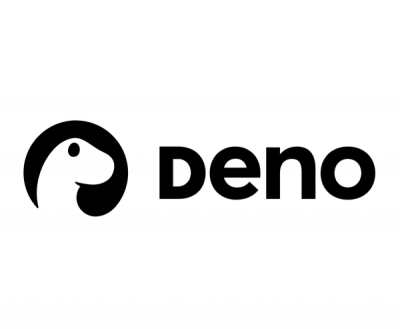
Security News
Deno 2.2 Improves Dependency Management and Expands Node.js Compatibility
Deno 2.2 enhances Node.js compatibility, improves dependency management, adds OpenTelemetry support, and expands linting and task automation for developers.
lygia, it's a granular and multi-language shader library designed for performance and flexibility

Tire of reimplementing and searching for the same functions over and over, started compiling and building a shader library of reusable assets (mostly functions) that can be include over and over. It's very granular, designed for reusability, performance and flexibility.
git clone https://github.com/patriciogonzalezvivo/lygia.git
#include the functions you need:#ifdef GL_ES
precision mediump float;
#endif
uniform vec2 u_resolution;
uniform float u_time;
#include "space/ratio.glsl"
#include "math/decimation.glsl"
#include "draw/circle.glsl"
void main(void) {
vec3 color = vec3(0.0);
vec2 st = gl_FragCoord.xy/u_resolution.xy;
st = ratio(st, u_resolution);
color = vec3(st.x,st.y,abs(sin(u_time)));
color = decimation(color, 20.);
color += circle(st, .5, .1);
gl_FragColor = vec4(color, 1.0);
}
The functions are divided in different categories:
math/: general math functions and constants.space/: general spatial operations like scale(), rotate(), etc.color/: general color operations like luma(), saturation(), etc.
blend/: typical blend photoshop operationsspace/: color space conversionsanimation/: animation operations
easing/: easing functionsgenerative/: generative functions like random(), noise(), etc.sdf/: signed distance field generation functions. Most of them ported from PixelSpiritDeckdraw/: functions that draw shapes, numbers, lines, etc. Most of them ported from PixelSpiritDeckfilters/: typical filter operations like different kind of blurs, mean and median filters.There are some functions that are "templeted" using #defines. You can change how it behaves by defining a keyword before including it. For examples, gaussian blurs usually are done in two passes (and it defaults), but let's say you are in a rush you can specify to use
#define GAUSSIANBLUR_2D
#include "filter/gaussianBlur.glsl"
void main(void) {
...
vec2 pixel = 1./u_resolution;
color = gaussianBlur(u_tex0, uv, pixel, 9);
...
}
This library have been build over years, and most often than not on top of the work of brillant generous people like: Inigo Quiles, Morgan McGuire, Hugh Kennedy, Matt DesLauriers. I have tried to give according credits and correct license to each file. It's not perfect but it could be with your help! Please if you see something, say somthing.
Lygia is open sourced under the terms of the BSD license. You are free to use it, extend it and redistribute without charge, but I really appreciate if you can support improving it. That could be adding new functions, testing it, fixing bugs, translating the GLSL files to HLSL and Metal or just sponsoring me through GitHub to do it for you.
This library:
Relays on #include "file" which is defined by Khornos GLSL standard and suported by most engines and enviroments ( like glslViewer, glsl-canvas VS Code pluging, Unity, etc. ). It requires a tipical C-like pre-compiler MACRO which is easy to implement with just basic string operations to resolve dependencies. Here you can find some implementations on different languages:
it's very granular. One file, one function. Ex: myFunc.glsl contains myFunct().
There are some files that just include a collection of files inside a folder with the same name. For example:
color/blend.glsl
// which includes
color/blend/*.glsl
*.glsl) but the goal is to have duplicate files for HLSL (*.hlsl) and Metal (*.metal).math/mix.glsl
math/mix.hlsl
/*
author: <FULL NAME>
description: [DESCRIPTION + URL]
use: myFunc(<float> input)
options: none
license: |
This software is released under the MIT license:
Permission is hereby granted, free of charge, to any person obtaining a copy of this software and associated documentation files (the "Software"), to deal in the Software without restriction, including without limitation the rights to use, copy, modify, merge, publish, distribute, sublicense, and/or sell copies of the Software, and to permit persons to whom the Software is furnished to do so, subject to the following conditions:
The above copyright notice and this permission notice shall be included in all copies or substantial portions of the Software.
THE SOFTWARE IS PROVIDED "AS IS", WITHOUT WARRANTY OF ANY KIND, EXPRESS OR IMPLIED, INCLUDING BUT NOT LIMITED TO THE WARRANTIES OF MERCHANTABILITY, FITNESS FOR A PARTICULAR PURPOSE AND NONINFRINGEMENT. IN NO EVENT SHALL THE AUTHORS OR COPYRIGHT HOLDERS BE LIABLE FOR ANY CLAIM, DAMAGES OR OTHER LIABILITY, WHETHER IN AN ACTION OF CONTRACT, TORT OR OTHERWISE, ARISING FROM, OUT OF OR IN CONNECTION WITH THE SOFTWARE OR THE USE OR OTHER DEALINGS IN THE SOFTWARE.
*/
FNC_ is followed with the function name:#ifndef FNC_MYFUNC
#define FNC_MYFUNC
float myFunc(float in) {
return in;
}
#endif
#ifndef flag check. So once pre-compiled things are use/description/license are cristal clear and nicelly separated.#include "../this/other/function.glsl"
/*
author: <FULL NAME>
...
#ifndef FNC_MYFUNC
#define FNC_MYFUNC
...
#defines probably the most frequent one is templeting the sampling function for reusability. The #define options start with the name of the function, in this example MYFUNC_. They are added as options: in the header./*
author: <FULL NAME>
description: [DESCRIPTION + URL]
use: myFunc(<sampler2D> texture, <vec2> st)
options: |
MYFUNC_TYPE: return type
MYFUNC_SAMPLER_FNC: function use to texture sample
license: ...
*/
#ifndef FNC_MYFUNC
#define FNC_MYFUNC
#ifndef MYFUNC_TYPE
#define MYFUNC_TYPE vec4
#endif
#ifndef MYFUNC_SAMPLER_FNC
#define MYFUNC_SAMPLER_FNC(POS_UV) texture2D(tex, POS_UV)
#endif
MYFUNC_TYPE myFunc(sampler2D tex, vec2 st) {
return MYFUNC_SAMPLER_FNC(st);
}
#endif
sampler2D, mat4, mat3, mat2, vec4, vec3, vec2, float, ivec4, ivec3, ivec2, int, bool/*
author: <FULL NAME>
description: [DESCRIPTION + URL]
use: myFunc(<vec2> st, <vec2|float> x[, <float> y])
license: ...
*/
#ifndef FNC_MYFUNC
#define FNC_MYFUNC
vec2 myFunc(vec2 st, vec2 x) {
return st * x;
}
vec2 myFunc(vec2 st, float x) {
return st * x;
}
vec2 myFunc(vec2 st, float x, float y) {
return st * vec2(x, y);
}
#endif
FAQs
lygia, it's a granular and multi-language shader library designed for performance and flexibility
The npm package lygia receives a total of 763 weekly downloads. As such, lygia popularity was classified as not popular.
We found that lygia demonstrated a healthy version release cadence and project activity because the last version was released less than a year ago. It has 0 open source maintainers collaborating on the project.
Did you know?

Socket for GitHub automatically highlights issues in each pull request and monitors the health of all your open source dependencies. Discover the contents of your packages and block harmful activity before you install or update your dependencies.

Security News
Deno 2.2 enhances Node.js compatibility, improves dependency management, adds OpenTelemetry support, and expands linting and task automation for developers.

Security News
React's CRA deprecation announcement sparked community criticism over framework recommendations, leading to quick updates acknowledging build tools like Vite as valid alternatives.

Security News
Ransomware payment rates hit an all-time low in 2024 as law enforcement crackdowns, stronger defenses, and shifting policies make attacks riskier and less profitable.